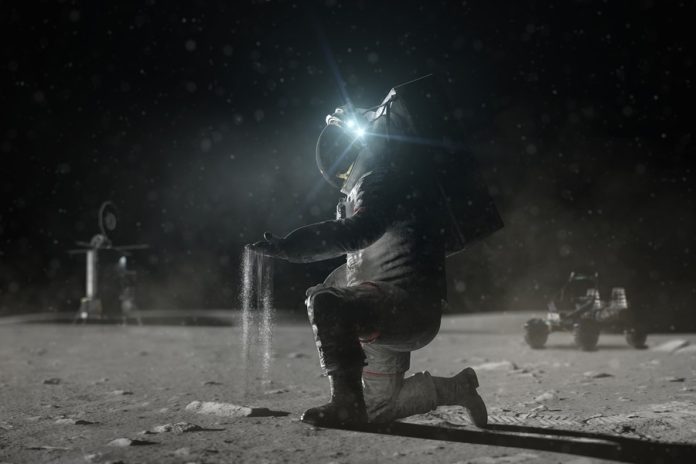
While the Moon lacks the breathable air we have on Earth, it does have a very thin atmosphere, known as an “exosphere.”
This delicate layer of atoms has puzzled scientists since the 1980s, but a new study by MIT and the University of Chicago finally pinpoints the main process responsible for its formation and maintenance: impact vaporization.
Impact vaporization occurs when meteorites and tiny space dust collide with the Moon’s surface, causing the soil to heat up and release atoms into the air.
Over the Moon’s 4.5-billion-year history, these constant impacts have created and sustained its exosphere.
Researchers analyzed lunar soil samples collected by Apollo mission astronauts to understand this process better.
Their study, published in Science Advances, reveals that the Moon’s atmosphere is primarily a result of meteorite impacts.
These impacts kick up the lunar soil, vaporizing certain atoms and sending them into the air. Some atoms escape into space, while others remain suspended, forming the thin atmosphere.
Nicole Nie, an assistant professor at MIT, led the study and confirmed that meteorite impact vaporization is the dominant process creating the lunar atmosphere.
Her co-authors include scientists from the University of Chicago and NASA’s Goddard Space Flight Center.
In 2013, NASA’s Lunar Atmosphere and Dust Environment Explorer (LADEE) orbiter collected data on the Moon’s atmosphere. Scientists hoped LADEE would help determine the origins of the Moon’s exosphere.
It suggested two possible processes: impact vaporization and ion sputtering, which occurs when solar wind particles hit the Moon’s surface, knocking atoms into the air.
However, LADEE’s data wasn’t definitive. To get clearer answers, Nie’s team studied the Apollo samples. They focused on potassium and rubidium, two elements easily vaporized by impacts and ion sputtering.
By analyzing the isotopes of these elements in the soil, they could determine which process was more significant.
Their findings showed that the soil contained more heavy isotopes of potassium and rubidium, indicating that impact vaporization was the main contributor to the Moon’s atmosphere.
According to their analysis, around 70% or more of the atmosphere is due to meteorite impacts, while ion sputtering from the solar wind accounts for about 30%.
Justin Hu, a postdoc at Cambridge University who was not involved in the study, praised the innovative approach of combining potassium and rubidium isotope measurements with quantitative modeling.
This research not only sheds light on the Moon’s history but also suggests that similar processes might occur on other moons and asteroids, which are targets for future space missions. Nicole Nie emphasized the importance of returning samples from the Moon and other planetary bodies to deepen our understanding of the solar system’s formation and evolution.
Thanks to these Apollo samples, we now have a clearer picture of how the Moon’s tenuous atmosphere came to be, enriching our knowledge of our nearest celestial neighbor.



